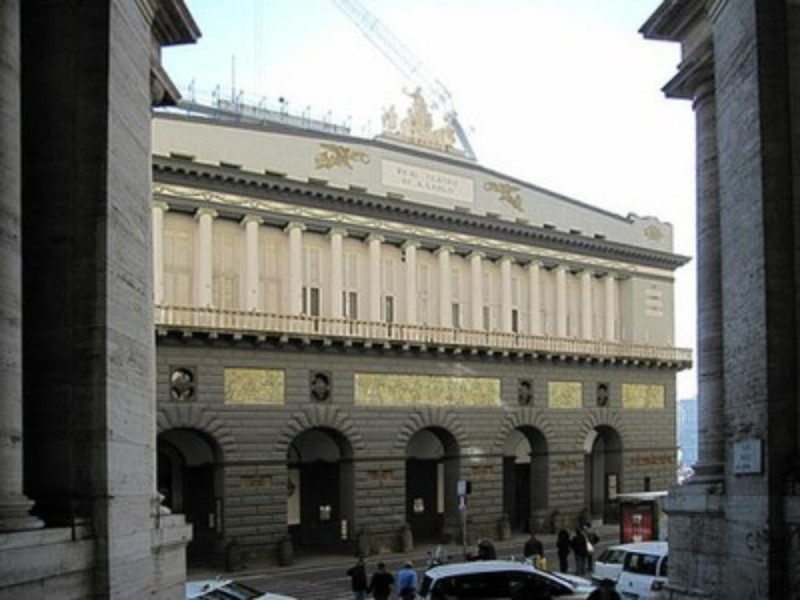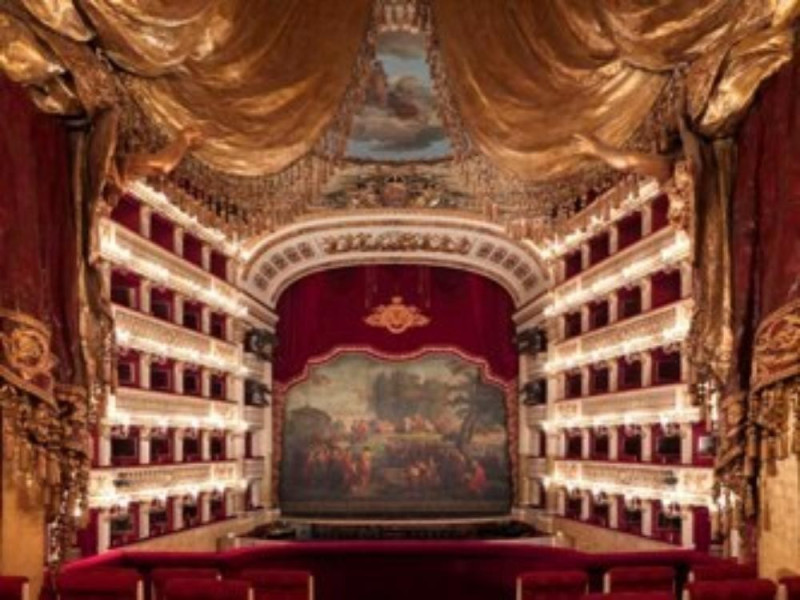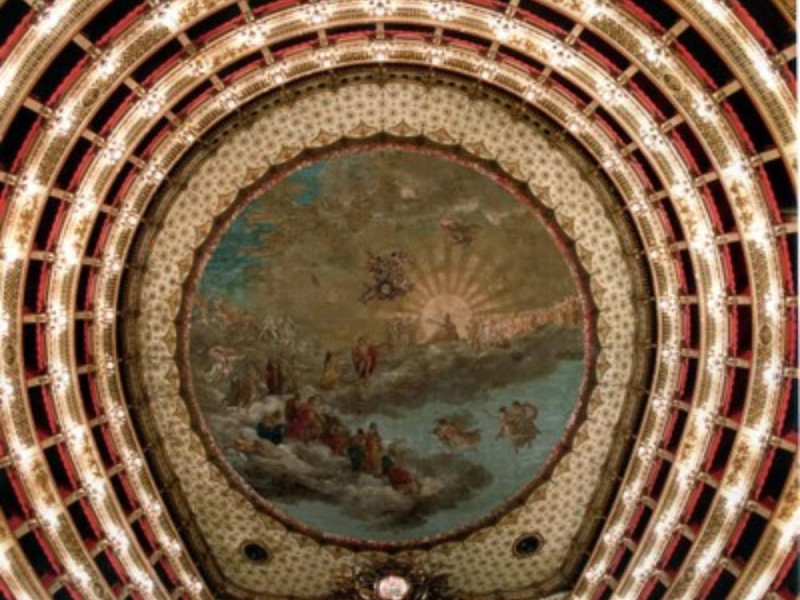Teatro San Carlo
The Real Teatro di San Carlo (Royal Theatre of Saint Charles), its original name under the Bourbon monarchy but known today as simply the Teatro di San Carlo, is an opera house in Naples, Italy. It is located adjacent to the central Piazza del Plebiscito, and connected to the Royal Palace.
It is the oldest continuously active venue for public opera in Europe, opening in 1737, decades before both the Milan's La Scala and Venice's La Fenice theatres. [1]
The opera season runs from late January to May, with the ballet season taking place from April to early June. The house currently has a seating capacity of 3,285
The opera house was commissioned by the Bourbon King Charles VII of Naples (Carlo VII in Italian). Charles wanted to endow Naples with a new and larger theatre to replace the old, dilapidated, and too-small Teatro San Bartolomeo of 1621, which had served the city well, especially after Scarlattihad moved there in 1682 and had begun to create an important opera centre which existed well into the 1700s.[3]
Thus, the San Carlo was inaugurated on 4 November 1737, the king's name day, with the performance of the opera Domenico Sarro's Achille in Sciro, which was based on the play by the dramatist Metastasio. As was customary, the role of Achilles was played by a woman, Vittoria Tesi, called "Moretta"; the opera also featured soprano Anna Peruzzi, called "the Parrucchierina" and tenor Angelo Amorevoli. Sarro also conducted the orchestra in two ballets as intermezzi, created by Gaetano Grossatesta, with scenes designed by Pietro Righini.[1] The first seasons highlighted the royal preference for dance numbers, and featured among the performers famous castrati.
In the late 18th century, Christoph Willibald Gluck was called to Naples by the impresario Tufarelli to direct his Clemenza di Tito (1752) at the theatre, and Johann Christian Bach in 1761-62 brought two operas, Catone in Utica and Alessandro nell'Indie.
The new opera house was designed by Giovanni Antonio Medrano, a military architect, and Angelo Carasale, the former director of the San Bartolomeo. It was built at a cost of 75,000 ducats. The hall was 28.6 meters long and 22.5 meters wide, with 184 boxes, including those of proscenium, arranged in six orders, plus a royal box capable of accommodating ten people, for a total of 1,379 seats. Including standing room, the theatre could hold over 3,000 people. The fastidious composer and violinist Louis Spohr reviewed the size and acoustic properties of this opera house very thoroughly on 15 February 1817 and concluded that:
there is no better place for ballet and pantomime. Military movements of infantry and cavalry, battles, and storms at sea can be represented here without falling into the ludicrous. But for opera, itself, the house is too large. Although the singers, Signora Isabella Colbran, [Prima Donna of the Teatro San Carlo opera company and Rossini's future wife], and the Signori Nozzari, Benedetti, etc., have very strong voices, only their highest and most stentorian tones could be heard. Any kind of tender utterance was lost.[4]
Much admired for its architecture, its gold decorations, and the sumptuous blue upholstery (blue and gold being the official colours of the Bourbons), the San Carlo was now the biggest opera house in the world.[5] In relation to the power of the existing Bourbon Kingdom of the Two Sicilies, Beauvert notes that the design of the house, with its 184 boxes lacking any curtains was so that "no one could the scrutiny by the sovereign" who had his private access from the Royal Palace.[5]
In 1809 Domenico Barbaia was appointed manager of the royal opera houses in Naples and remained in charge until 1841.[6] He soon established a reputation for innovative and dazzling productions, which attracted both the public and leading singers to the opera house.
On 13 February 1816[7] a fire broke out during a dress-rehearsal for a ballet performance and quickly spread to destroy the entire building with only outer walls remaining intact.
On the orders of King Ferdinand IV, another Bourbon monarch and son of Charles III and using the services of Antonio Niccolini, Barbaia was able to rebuild the opera house within ten months. It was rebuilt as a traditional horseshoe-shaped auditorium with 1,444 seats, and a proscenium, 33.5m wide and 30m high. The stage was 34.5m deep. Niccolini embellished in the inner of the bas-relief depicting "Time and the Hour". The central frescoed ceiling painting of Apollo presenting to Minerva the greatest poets of the world painted by Antonio, Giuseppe e Giovanni Cammarano.
On 12 January 1817, the rebuilt theatre was inaugurated with Johann Simon Mayr's Il sogno di Partenope. Stendhal attended the second night of the inauguration and wrote: "There is nothing in all Europe, I won’t say comparable to this theatre, but which gives the slightest idea of what it is like..., it dazzles the eyes, it enraptures the soul...".[citation needed] In 1844 there was a new redecoration under Niccolini his son Fausto and Francesco Maria dei Giudice. The main aspect of the new intervention has been the change of the theatre's interior appearance to the now-traditional red and gold




